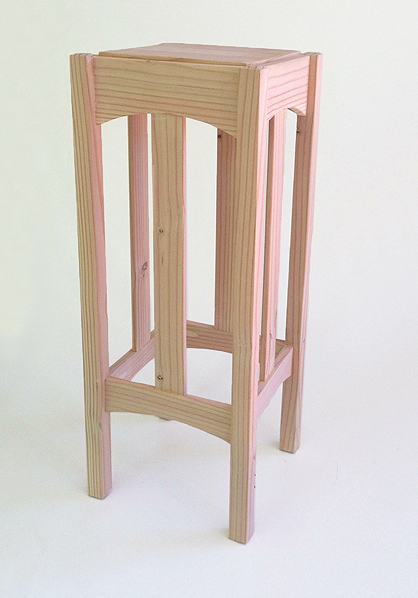 I’m always a bit fascinated by what some people can do with what others would consider “junk” or “run of the mill” or ordinary. When someone can take something considered a throw-away, and make it much more than it was, so called “up-cycling” like this guy does on Etsy, using…forks. You can get forks for just about free at a garage sale, or new ones at the dollar stores. He has take materials, probably less than $4 worth, and with a little imagination and welding, turned it into something he can sell for almost $30. That is pretty cool.
I’m always a bit fascinated by what some people can do with what others would consider “junk” or “run of the mill” or ordinary. When someone can take something considered a throw-away, and make it much more than it was, so called “up-cycling” like this guy does on Etsy, using…forks. You can get forks for just about free at a garage sale, or new ones at the dollar stores. He has take materials, probably less than $4 worth, and with a little imagination and welding, turned it into something he can sell for almost $30. That is pretty cool.
Well, forks aren’t my thing, but wood is.
Now, the rage these days are furniture, or furnishings, from wood pallets – again, overlooked utilitarian wood. Usually trashed or used again and again. You can see examples of what can be done with wood pallets on my Pinterest page. There is also reclaimed lumber being used for flooring and furniture as well. My take is it’s just a passing fade. Don’t get me wrong, I’m all for recycling and using materials in different ways, but I just don’t see the staying power of pallet furniture.
So, as a little intellectual challenge to myself, I was wondering, what could I make out of ONE lumber yard 2″x4″x8′ – the common stud you’d find in any home’s wall?
So over I went to my local Home Depot, and found a 2×4, the straights, knot-less one I could, a premium fir stud, for about $3. It was actually quite pretty, with a cream color, and growth rings of a pale red.
Now, what to make with this? I had my eye on this plant stand by Limbert out of oak and ebony:
 So, I set about trying to re-create it in Sketchup. Problem was, there was just not enough material in a 2×4 to do it (incidentally, a 2×4 is not actually 2″ x 4″; it’s 1.5″ x 3.5″). I took into account waste from the kerf of the saw, and tried every which way to make it happen.
So, I set about trying to re-create it in Sketchup. Problem was, there was just not enough material in a 2×4 to do it (incidentally, a 2×4 is not actually 2″ x 4″; it’s 1.5″ x 3.5″). I took into account waste from the kerf of the saw, and tried every which way to make it happen.
Wouldn’t work.
BUT, I was able to make it work when I did it at 3/4 size.
After flattening the board, taking off the rounded edges, and just making a plain piece of lumber, I lost about an 1/8″, and took those dimensions into account in my Sketchup drawing. The project would take precision cutting, and there was no room for error – not even a 1/16″.
I had a little bit of scrap left over, a few little blocks, and I guess if I did it over, I would have tried to work those in somehow, so I had virtually NO waste, save the sawdust…
But anyway, here’s how it came out….
I ended up painting it a brown color with a black top, because staining pine is a nightmare!










